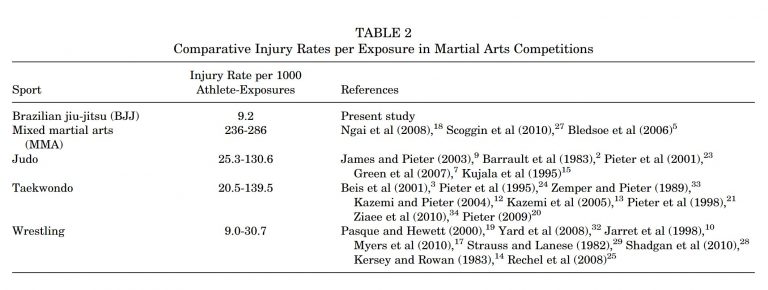Self-Defense 101: Choosing the Best Martial Arts Style to Protect Yourself
Looking for a way to protect yourself in today’s world? Martial arts can be a powerful tool for self-defense, and in this blog post, we’ll show you how to choose the best style for your needs.
Whether you’re a beginner or an experienced martial artist, we’ll provide you with a comprehensive guide to help you make an informed decision. You’ll also learn how practicing martial arts can enhance your physical and mental abilities, and we’ll share some tips for getting started.
So, let’s explore the world of martial arts and discover how it can benefit you.
Introduction

People learn martial arts as a hobby that helps them improve their fighting and self-defense skills. At the same time, martial arts can facilitate players in living a physically healthy and disciplined life. Learning martial arts for self-defense has become a growing trend worldwide these days.
The notion of martial arts originated as a technique to help people defend themselves in adverse situations. Further, with the rise of various modern MMA competitions like the UFC, Bellator, and others, it has become possible to look at any form of martial arts in a quasi-realistic setup. Consequently, it has offered us judicious and viable insights into the true effectiveness of martial arts forms.
What is Self-Defense?
Let’s put it simply; self-defense refers to using physical force to defend oneself in any kind of atrocious or adverse situation. It has become an extremely vital skill these days, as it allows one to protect themselves, boosts their confidence levels, raises awareness, and allows them to take the right actions.

Today, we live in a world of rising crimes and violence, which makes it essential to learn self-defense techniques to defend oneself when the time comes. In this way, one can take action to protect themselves even in dangerous situations rather than getting stunned in the situation.
Why Choose Martial Arts for Self-Defense?
While there are various ways and techniques one can learn to defend themselves in adverse situations, learning martial arts for self-defense can be one of the best ways. You can come across many scientifically proven benefits of learning self-defense in martial arts schools. Some of its key benefits of it are:
- Learning self-defense martial arts will allow you to remain safe even in treacherous situations. The true intention of learning martial arts is to possess the capability to defend oneself. The skill was designed to make perpetrators unable to cause harm to you. Hence, martial arts will teach you to exercise control over your knowledge of the defense and only use it without causing harm to anyone.
- Martial arts training can be further beneficial in enhancing your confidence levels. The rigorous workout sessions of martial arts usually happen before a crowd. Hence, you can easily get over your initial fright of performing before strangers, and slowly, over time, you can boost your confidence levels!
- By learning top self-defense martial arts, you can benefit from having an efficient stress buster. There are often various things in life that can stress one out. Hence, one always looks for efficient ways to release stress. At such a juncture, learning martial arts styles can offer you a proficient strategy to release your stress.
- Learning effective martial arts for self-defense can keep you effectively engaged. Martial arts can be immensely exciting and engaging for you. In this way, it will efficiently keep you engrossed in the training sessions daily. Hence, martial arts can be enjoyable and engaging for one to take up and continue doing for a long time. In contrast to anything else, martial arts are not something that you will need to force yourself to do.
The Best Martial Arts for Self-Defense
Learning self-defense martial arts can be a valuable skill in today’s unpredictable world. A good martial arts trainer will advise you to avoid conflicts and escape from troubling situations whenever possible. This is especially important for beginners in the field of martial arts. Below, we explore some of the best martial arts for self-defense, highlighting their unique features and usefulness in real-life situations.
Here are some best martial arts for self-defense that you can learn now:
Brazilian Jiu-Jitsu (BJJ)
BJJ is a grappling-based martial art that emphasizes ground fighting techniques. Its practical approach allows practitioners to overcome opponents who may be larger or stronger by utilizing leverage, joint locks, and chokeholds. As a result, many women have turned to BJJ for self-defense training. In a self-defense situation, BJJ can help you to control an opponent on the ground and escape from an attack. For example, if someone tries to grab you from behind, you can use a BJJ technique called the rear-naked choke to subdue them. BJJ is practiced wearing a gi, and this is not always applicable to real life.

Krav Maga
Developed for street fighting in the early 1950s, Krav Maga is known for its no-holds-barred approach. There are no rules or competitions in Krav Maga, as it focuses on preparing practitioners for real-life scenarios. Trainers often use various methods to confront fears and develop mental resilience during training. Krav Maga is a practical self-defense martial art that teaches you to defend yourself against a variety of threats, including grabs, punches, and weapon attacks. For example, if someone tries to grab your purse, you can use a Krav Maga technique to disarm them and escape.
Muay Thai
Considered one of the most comprehensive stand-up martial arts, Muay Thai teaches powerful and efficient striking techniques. Known as the “art of eight limbs,” it incorporates punches, kicks, elbows, and knees in its arsenal. Muay Thai’s emphasis on powerful strikes makes it a valuable skill for self-defense situations where you need to quickly disable an attacker. For example, a well-placed knee strike can incapacitate an opponent who is trying to grab or strike you.

Boxing
While boxing may not be the first choice for street fighting, it provides valuable self-defense skills. Training in boxing builds physical and mental strength, and since punches are a common form of defense, it remains a top choice for self-defense martial arts. Boxing’s focus on punches and footwork can be useful in a self-defense situation where you need to defend yourself with your fists. For example, you can use a jab to keep an attacker at bay or a hook to deliver a powerful blow.
Karate
Karate, a martial art originating from Okinawa, has gained popularity worldwide as an effective self-defense method. It encompasses various sub-styles, and many martial arts schools now offer karate training. Karate’s focus on striking and blocking techniques can be useful in a self-defense situation where you need to quickly defend yourself against an attacker. For example, you can use a front kick to keep an attacker at a distance or a palm-heel strike to the nose to disable them.

Judo
Popular among MMA fighters and even world leaders, Judo is known for its emphasis on throws and grappling techniques. Jigoro Kano founded Judo as the world’s first organized martial art, and it remains a powerful choice for self-defense by immobilizing opponents. Judo’s focus on throws and grappling techniques can be useful in a self-defense situation where you need to control an attacker and prevent them from harming you. For example, you can use a Judo throw to take an attacker to the ground and immobilize them.
Taekwondo
A Korean martial art developed by Choi Hong Hi and others, Taekwondo focuses primarily on kicks. Its practitioners capitalize on the speed and power of leg strikes, making it a unique and effective self-defense martial art. Taekwondo’s emphasis on high-speed kicks can be useful in a self-defense situation where you need to disable an attacker from a distance. For example, a well-placed roundhouse kick to the head can quickly incapacitate an attacker.
Kung Fu
Kung Fu offers not only self-defense techniques, but also exercise and spiritual growth. Its stances and movements are based on a profound understanding of human anatomy and physiology, requiring proper muscle coordination for effective execution. Kung Fu’s focus on coordination, balance, and agility can be useful in a self-defense situation where you need to quickly dodge and counter an attacker’s moves. For example, you can use a Kung Fu technique to deflect a punch and counter with a quick strike.

Jeet Kune Do
Created by Bruce Lee for street fighting, Jeet Kune Do emphasizes simplicity, directness, and freedom in its techniques. It remains effective in MMA and teaches practitioners to adapt and counter their opponents’ fighting styles. Jeet Kune Do’s emphasis on adaptability and improvisation can be useful in a self-defense situation where you need to quickly adjust to an attacker’s moves. For example, you can use a Jeet Kune Do technique to deflect an attacker’s punch and counter with a knee strike.
Systema
Systema, a Russian martial art, encourages a disciplined lifestyle while teaching self-defense techniques. It focuses on controlling an attacker’s limbs and provides defense against weapons. By training in Systema, practitioners learn to let go of ego, fear, and tension during combat. Systema’s emphasis on relaxation and fluidity can be useful in a self-defense situation where you need to quickly respond to an attacker’s moves without tensing up. For example, you can use a Systema technique to redirect an attacker’s force and counter with a joint lock or strike.
In conclusion, numerous martial arts can provide valuable self-defense skills. Each style offers unique techniques and approaches that cater to individual preferences and needs. To choose the most suitable martial art, consider your goals, physical capabilities, and available training facilities. By learning a self-defense martial art, you can develop valuable skills and confidence to protect yourself and your loved ones in unpredictable situations.
Factors to Consider When Choosing a Martial Art for Self-Defense
Personal Goals
Understanding your personal goals is crucial before choosing the right form of martial arts for self-defense. It is important to assess your needs and desires and have a coherent understanding of your goals before choosing the right technique.
Fitness Level
Knowing your present fitness levels is crucial for you to understand. Based on how fit your body is and what your body can undertake, you can select the best martial arts for self-defense for yourself!
Availability of Classes
You also need to research the schools near you offering training in self-defense martial arts. Thereafter, you are free to choose the martial arts styles that suit you the best and sign up for them!
Self-Defense Focus
Before signing up for your martial arts training classes, you also need to find out which martial arts schools have a strong emphasis on self-defense techniques. Once you find it out, you can easily choose the best martial arts classes to sign up for!
Conclusion
Learning the best martial arts for self-defense today can help you possess the ability to protect yourself even in the face of adverse situations. Now that you have already stumbled upon this article and learned quite a lot about martial arts and self-defense, you are ready to take it to the next step. So, go ahead and start looking for martial arts schools near you where you can sign up today and start training yourself for the better!
Common Misconceptions About Martial Arts and Self-Defense
Now let us take a look at some common misconceptions about martial arts and self-defense:
The myth of the “one-size-fits-all” martial art
When it comes to martial arts, there is no choice of a one-size-fits-all solution. Different martial arts techniques are vividly different from each other. Each of the martial arts form focuses on a different fighting style. Hence, the risks involved in each are also quite significant.
The effectiveness of traditional martial arts in modern self-defense situations
Traditional martial arts styles like Karate, Judo, and others can still be highly effective and powerful in dodging an imminent attack and defending yourself. Thus, even in modern-day scenarios, you can still utilize traditional fighting techniques for your self-defense!
The role of competition and sparring in self-defense training
Competition training focuses on the rules and regulations of the particular competition while sparring essentially helps in sharpening and developing fighting attributes. Martial arts sparring can be efficient in teaching you the vitality of timing and judgment of distance concerning your offensive and defensive fighting styles.
The importance of cross-training and continuous learning
Cross-training involves commingling two or more varied martial arts styles, and it helps in improving physical fitness and enhances better coordination and balance. Continuous learning, on the other hand, helps you to condition your body and mind while also possessing the strength and stamina to combat violent situations.
FAQ
What is the best martial art for self-defense?
Karate, Brazilian Jiu-jitsu, Muay Thai, and Krav Maga are some of the best martial arts for self-defense.
Can I learn self-defense without joining a martial arts school?
Though it is possible to train yourself alone, it is still recommended that you join martial arts schools to undertake rigorous and efficient martial arts training.
How long does it take to become proficient in self-defense?
Training under a proficient trainer can prepare you to protect yourself from adverse situations in about six months of martial arts training.
Do I need to be physically fit to learn self-defense?
Many people neglect the vitality of physical fitness while learning self-defense martial arts for beginners. However, you must possess a profoundly solid base for agility, balance, and strength to train yourself properly.
Is it necessary to spar or compete to train for self-defense?
Sparring forms an integral part of training for effective martial arts for self-defense since the absence of it can make one possess an exaggerated perception of their skill set.
What should I look for in a good martial arts instructor?
A good martial arts instructor can effortlessly lead you by showing themselves as an example. They need to possess a sense of humor and not fret from laughing at their mistakes.
How can I practice self-defense at home?
Practicing in front of a mirror and practicing how to land a powerful punch can be a few effective tips for practicing self-defense techniques in your home!
Can I use martial arts for self-defense legally?
According to the law, every individual has the right to defend themselves, their properties, or another person.
How do I know if a martial arts school is reputable?
Checking the expertise and background of your martial arts instructor is an efficient tactic to find out if a martial arts school is reputable.
Do I need to be a certain age to learn self-defense?
There is no age limit to learn the best martial arts for self-defense, and there are some martial arts schools offering kindergarten lessons for kids in the age group of 3 – 5!




